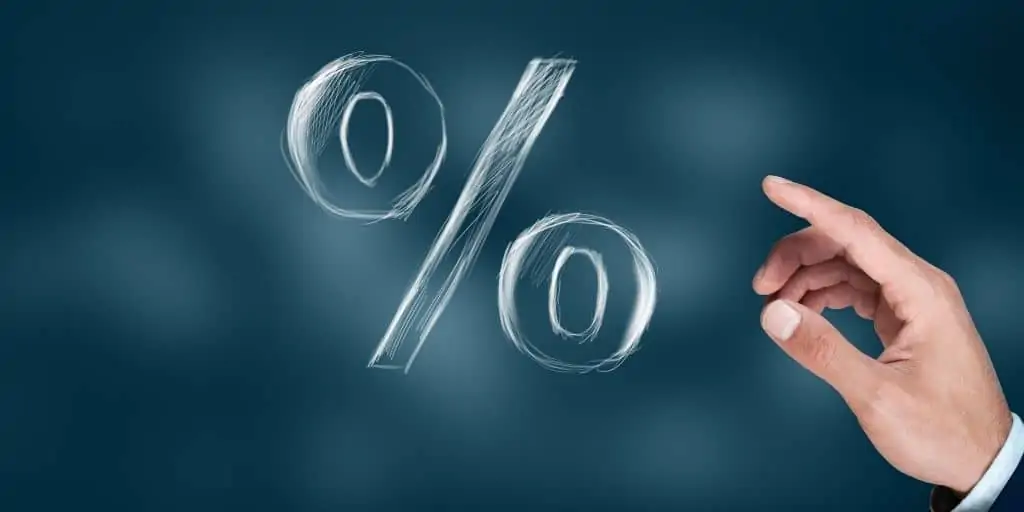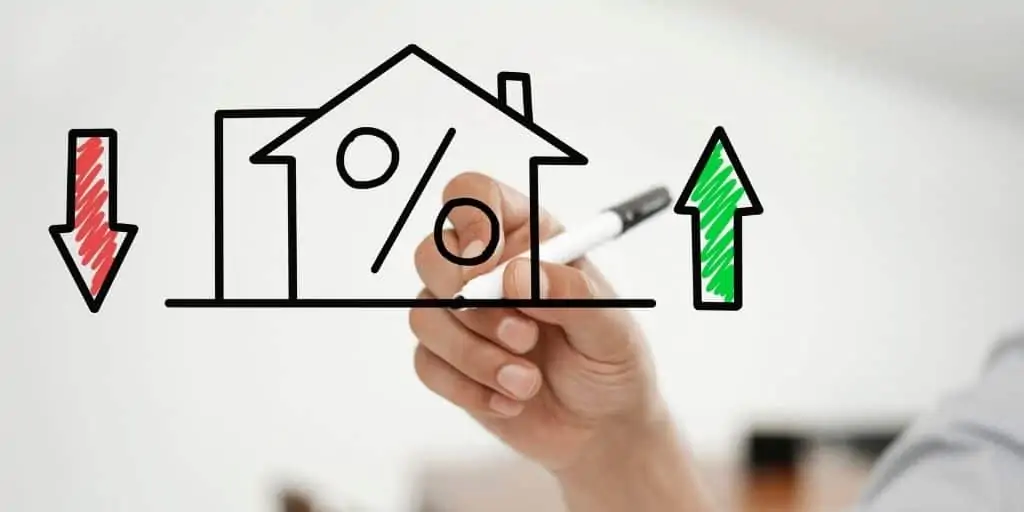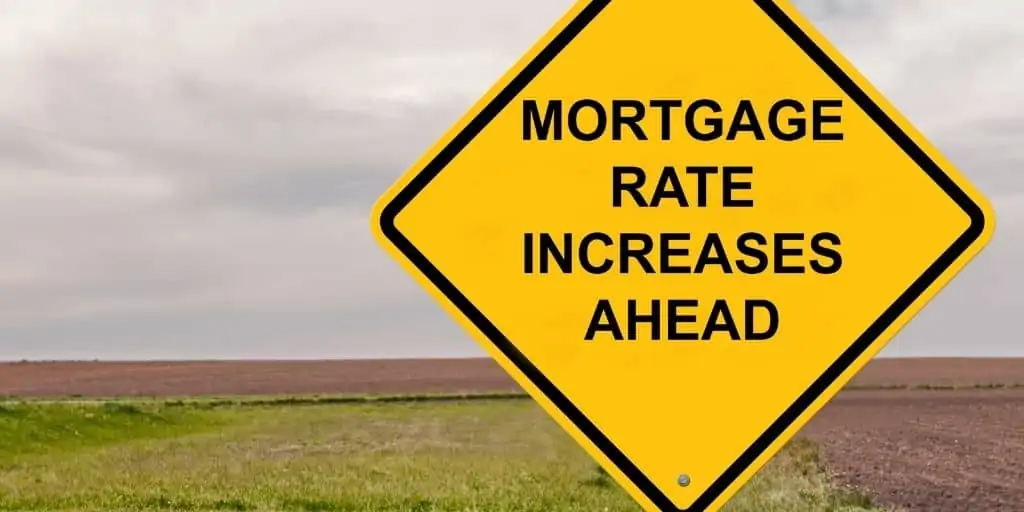What Is Variable Interest?
REtipster does not provide tax, investment, or financial advice. Always seek the help of a licensed financial professional before taking action.
How Do Variable Interest Rates Work?
A loan with a variable interest is one whose interest—the cost of borrowing money—changes over a specific period, such as the life of the loan. The interest rate changes due to market fluctuations, such as when the Federal Reserve changes interest rates.
Variable interest rates are tied to one of two benchmarks: the prime rate[1] (the interest rate that banks charge on their best customers) or the federal rate, the overnight interest rate that banks charge each other[2]. Most mortgages with variable interest in the United States depend on the prime rate.
Most loans that employ a variable interest rate fall into either one of two categories: variable rate or adjustable rates. Both use an index to determine whether they should raise or lower interest, but which particular index depends on the lender.
Variable Rate vs. Adjustable-Rate
Even in the financial sector, most people often use variable interest to refer to an adjustable-rate interest, like in an adjustable-rate mortgage.
Generally speaking, an adjustable rate is a subtype of variable interest. However, they have a subtle difference, as explained below[3].
Variable Rate Mortgages (VRM)
Loans with variable interest have fixed monthly payments; only their interest changes. When the interest rate decreases, more of the payment will be used toward the principal. Conversely, when the interest rate rises, more of the payment will go toward the interest. However, the monthly payment remains the same.
One downside of a VRM is that the amortization period of the loan may change. For example, if there are more interest rate increases than decreases, the borrower may take longer to pay the loan. On the other hand, the borrower can pay the loan far faster if the rates have gone down since the loan was made.
Adjustable-Rate Mortgages (ARM)
Meanwhile, an adjustable-rate mortgage is “true” floating-rate interest. Unlike a VRM, an ARM’s monthly payment changes depending on the interest rate. If the interest rate goes up, so does the monthly payment, and vice versa.
An advantage of an ARM is that its amortization schedule is fixed (i.e., a 30-year mortgage remains to be paid over 30 years, regardless of interest rates).
Generally, ARMs have an initial period where the interest will be fixed, after which it will be subject to interest rate fluctuations[4]. These ARMs are called “hybrid ARMs” because they combine fixed interest with variable interest principles. Some less common ARMs are standard ARMs, which are subject to interest rate adjustments from day one.
Some ARMs come with special features that include limiting how much a loan’s interest can increase from one period to the next (called a “cap”), restricting the maximum interest rate that can be charged over an adjustment period, and the maximum interest that can be charged over the life of the loan (called “ceiling”)[5].
Common Types of ARMs
ARMs come in various types, which are generally categorized by the length of their initial period and how much they adjust interest afterward. The three most common[6] are:
- 5/1 ARM: A 5/1 ARM is the most common type of ARM. It has a fixed interest rate for the first five years, with the remaining 25 years under an adjustment period. In a 5/1 scheme, the interest rate only changes once a year for 25 years while under adjustment.
- 10/1 ARM: Like a 5/1 ARM, the interest rate for a 10/1 ARM is fixed for the first 10 years and adjustable for the next 20 years. Its interest rate also changes only once a year for the next 20 years.
- 5/6 ARM: A 5/6 ARM loan has a fixed interest rate for the first five years of the loan, like a 5/1 ARM. However, the /6 means the interest rate changes six times in one year for 25 years, which means it is more prone to interest rate fluctuations.
What Are the Pros and Cons of Variable Interest?
Here are some of the advantages of variable interest rate loans[7]:
- The starting rate on a variable rate loan, whether VRM or ARM, is typically lower than the rate on a fixed-rate loan.
- Flexibility. Borrowers can make extra payments to pay off the loan sooner.
- Specifically for a VRM, if the interest rate goes down, the borrower will pay less interest and pay off the home loan faster. The monthly payment will decrease, and the total repayment costs will be lower.
Here are some of the disadvantages of variable interest rate loans[8]:
- In an ARM, if the interest rate goes up, the monthly payments may increase significantly. Depending on the type of ARM and how much the interest rate can change over the adjustment period, the total repayment costs may prove to be more expensive.
- For a VRM, rising and falling interest rates will dictate how long (or short) their amortization period will be. As a result, it may be harder to plan for the long term with a VRM.
Takeaways
- Variable interest is interest on a loan that can change over the life of the loan.
- Most people confuse variable interest and adjustable rates, although both are the same in that their interest changes based on an index, which tracks market variables.
- An adjustable-rate mortgage, or ARM, has a fixed amortization period, but its monthly payments may increase or decrease. A variable-rate mortgage, or VRM, has fixed monthly payments, but its amortization period can be either longer or shorter, depending on how much the rates have changed since the loan was made.
Sources
- White, A. (2021.) How the prime rate works and how it affects you. CNBC. Retrieved from https://www.cnbc.com/select/prime-interest-rates/
- Bankrate. (n.d.) Variable-rate Mortgage. Retrieved from https://www.bankrate.com/glossary/v/variable-rate-mortgage/
- Trusterra Mortgage. (2014.) Variable vs Adjustable Rate Mortgage. Retrieved from https://trusterramortgage.com/variable-vs-adjustable-rate-mortgage
- Wamala, Y. (2021.) Fixed vs. Variable Interest Rates: What’s the Difference? ValuePenguin. Retrieved from https://www.valuepenguin.com/loans/fixed-vs-variable-interest-rates
- Johnson, J. (2021.) What Is an Interest Rate Cap Structure? The Balance. Retrieved from: https://www.thebalance.com/what-is-an-interest-rate-cap-structure-5206935
- Dehan, A. (2021.) What Is An Adjustable-Rate Mortgage? Quicken Loans. Retrieved from https://www.quickenloans.com/learn/understanding-adjustable-rate-mortgages-arm-basics
- Corporate Finance Institute (n.d.) Variable Rate Loans. Retrieved from: https://corporatefinanceinstitute.com/resources/knowledge/credit/variable-rate-loans/
- Graham, K. (2021.) 5/1 ARM Loan: Everything You Need To Know. Rocket Mortgage. Retrieved from: https://www.rocketmortgage.com/learn/5-1-arm-loa








